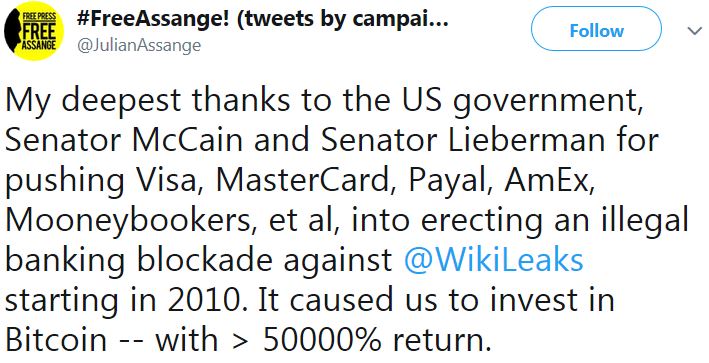Table of Contents
Here’s a collection of Bitcoin facts which may surprise, amuse, or even shock you… Hopefully, you’ll pick up some obscure facts which provide deeper insight into the fascinating world of Bitcoin.
“Bitcoin is a tool for freeing humanity from oligarchs and tyrants, dressed up as a get-rich-quick scheme,”as a well-known Bitcoiner famously stated.
This is a profound observation, which expresses both the incredible transformative potential of Bitcoin as well as its more obvious appeal to individual self-interest. While its technology is no doubt impressive, perhaps the real genius of Bitcoin is that it works with – rather than against – our flawed human nature, to achieve meaningful change in the world.
The truth is that there’s a whole lot more to Bitcoin than meets the eye, especially for those focused on the get-rich aspect.
Bitcoin Facts part one
The honey badger is Bitcoin’s unofficial animal mascot
Honey badgers are renowned for their toughness. The creatures are able to withstand terrible injuries, bee attacks, and bites from poisonous snakes, as described in a famous viral video (bad language warning). This resilient animal seemed like a good fit for Bitcoin, which has survived all kinds of attacks over the years.

A bug led to the accidental creation of 184 billion BTC in 2010
Known as the value overflow incident, this bug led to the accidental creation of a huge number of coins in August of 2010 at block height 74638. Satoshi or another developer fixed the error within 5 hours of its occurrence by releasing a patched Bitcoin client (version 0.3.10) which ignored the excess coins. As a majority of miners and nodes accepted this new client, the error was “forked out” and erased from the blockchain.
The maximum number of bitcoins isn’t really 21 million
In fact, it’s 20,999,987.4769 or thereabouts. It’s expected that the last bitcoin amount will be mined sometime between the years 2128 and 2140. The number is lower than the frequently-cited figure due to Satoshi’s block reward mechanism, which doesn’t quite reach 21 million, but also due to mining errors which have negated the creation of new coins. It’s possible that future errors will reduce total supply even further.
A smaller unit than one satoshi is already in use
Bitcoin’s value may eventually rise so high that 1 satoshi becomes too valuable for the smallest possible transaction. In this scenario, Bitcoin’s code will likely be altered to add more decimal places, allowing for smaller units. This wouldn’t be inflationary though, as no new bitcoins would be created, existing ones would just be “sliced finer.”
On the Lightning Network layer however, milli-satoshis are already in use! One millisatoshi (abbreviated as “msat”) is worth one thousandth of a satoshi. In numbers, one msat looks like this: 0.000,000,000,001 BTC.
You can run Ethereum smart contracts on top of Bitcoin
Some of the more common smart contracts in Bitcoin include things like multisig and time-locked transactions. However, Bitcoin’s design deliberately prevents more complex, custom smart contracts for security reasons. The Rootstock project, which runs as a merge-mined sidechain to Bitcoin, allows for Ethereum-compatible smart contracts, like ICOs, to be executed via Bitcoin payment.
Bitcoin’s uptime is in the coveted “four nines” range
In other words, the network has been functional for 99.99% of the time since its creation over 9 years ago. This compares extremely well with standard centralized services, which are considered to be doing well if they hit four nines in a single month.
The downtime was due to the bug discussed in point 8. You can check the current uptime stats here.
Bitcoin’s downtime resulted from the LevelDB bug, which caused a hardfork in 2013
The 0.8 version of the bitcoin client was upgraded to use a more efficient form of database (used for storing blockchain data on the user’s machine). Unfortunately, the new structure, LevelDB, wasn’t fully compatible with the old, BerkeleyDB. As a result, the network split between users running the new and old versions.
Thanks to developers and pool operators notifying big miners as to which version they should run, the “original” side of the fork soon accumulated more blocks than the other. It took about 6 hours for the split to resolve.
Satoshi Nakomoto disappeared right after Gavin Andresen went to the CIA

Gavin Andresen was the former maintainer of the Bitcoin Core codebase. In June of 2012, Gavin went to the CIA’s headquarters to tell them about Bitcoin.
According to Gavin’s words on Bruce Wagner’s Bitcoin podcast, Satoshi’s disappearance may have been linked to the CIA meeting. Andresen said that he hadn’t received an email from Satoshi since informing him of the meeting with the CIA.
In 2014, Gavin appeared before the Council on Foreign Relations to present similar information.
Bitcoin was used to circumvent the WikiLeaks banking blockade, to Satoshi’s displeasure
In mid-2011, under pressure from the Obama administration, major American banks and payment services imposed a financial ban on WikiLeaks. People looking to support the organization used Bitcoin to get around the ban, proving Bitcoin’s utility as censorship-resistant money.
However, Satoshi was concerned, fearing the hostile attention from powerful players which support for WikiLeaks would bring to the project. Satoshi disappeared from the project soon afterwards.
Julian Assange later thanked the blockade for forcing WikiLeaks to hold Bitcoin
In October 2017, Assange tweeted that the banking blockade led WikiLeaks to invest in Bitcoin, realizing a massive profit:

The earliest Bitcoin faucets dispensed 5 BTC per visitor
In June of 2010, Gavin Andresen created the first Bitcoin faucet to distribute 5 free bitcoins per day to anyone who wanted them. At the time, BTC was worth very little and the faucet was funded with well over 1,000 BTC. Based on the current price, it’s amazing to think how much value was given away for free.
There are hundreds of Bitcoin Core developers
Bitcoin Core is the main reference client for Bitcoin. Many other wallets exist but Core is the standard for maintaining compatibility between them. According to the Bitcoin Core site, there are at least 366 talented coders who’ve freely contributed to the development of Core.
Bitcoin is only used about 10% for crime according to the DEA
Although there’s still a lingering misperception that Bitcoin is used primarily for illicit transactions on darknet markets, this myth was recently dispelled by a special agent from the US Drug Enforcement Agency (DEA).
According to the Cyber Investigative Task Force, an inter-agency collaboration involving the DEA, FBI, and ATF, 90% or more of Bitcoin volume is entirely unrelated to drug purchases. The peak of Bitcoin’s usage for darknet trades occurred between 2011 and 2012.
The FBI agents involved in the Silk Road darknet investigation were themselves criminals
Silk Road was the famous darknet drug market which allowed people to trade narcotics for Bitcoin. Two former Secret Service agents were assigned to shutting down Silk Road. However, after the site was taken down in October 2013, these two agents were themselves imprisoned. Charges of extortion, money laundering and obstruction of justice were brought against the agents for their misconduct during the Silk Road investigation.

























